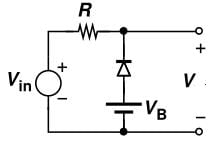Practice Test: Electronics Engineering (ECE)- 3 - Electronics and Communication Engineering (ECE) MCQ
30 Questions MCQ Test - Practice Test: Electronics Engineering (ECE)- 3
“Wanted a two bedroom flat in the court area for immediate possession” - An Advertisement.
Assumptions:
I. Flats are available in the court area
II. Some people will respond to the advertisement
III. It is a practice to give such an advertisement
Assumptions:
I. Flats are available in the court area
II. Some people will respond to the advertisement
III. It is a practice to give such an advertisement
Which of the following is most similar in meaning to the given word
DIRE
DIRE
In the question given below, the sentence has a part printed in bold. That part may contain a grammatical error. Replace that part with four choices given below:
The famous playwright has been in the sick bed from the last one week.
g(t) = 4x (t)
The ROC of z-transform of the discrete time sequence, x(n) so that x(n) is absolutely summable
The energy of constant-amplitude complex valued exponential sequence is __________ (where A is the constant amplitude)
In the given circuit input voltage Vin is 3V and VB is 1.5V. The resistance R is 1.5K. Cut-in voltage of diode is 0.5V. Forward bias resistance is 10Ω. The Voltage V will be ____________

Which of the following is a microwave power amplifier?
The minimal sum of products form of is














